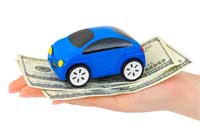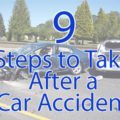Buying car insurance is something of a balancing act. On the one hand, you want to make sure that you purchase enough coverage to protect yourself. If you buy too little coverage and then get in an accident, however, you could end up spending way more money than you would have if you had just invested in a good insurance policy. After all, the costs of repairing or replacing your car, covering your medical expenses, paying for damage and injuries to other parties, or weathering legal woes related to the accident can add up quickly.
On the other hand, you also don’t want to buy more insurance coverage than you really need. Auto insurance is an investment, and you need to balance your risk and your budget to find the policy that is right for you. Otherwise, you could end up paying out thousands and thousands of dollars in insurance bills and never get a dime of it back.
Different Kinds of Car Insurance
There are a lot of things you can do to get cheaper car insurance coverage. However, perhaps no tactic is quite as important as doing your homework and understanding the coverage you need. Read on for a rundown of the different types of car insurance—as well as advice on whether or not to lay down your hard earned cash to pay for them.
Liability Coverage
Liability coverage is arguably the most important part of your car insurance policy, and required in almost every state.. This coverage will pay for damage and injuries caused by you when you get into an accident. How much coverage you buy will depend on 1) the state you live in and the minimum levels of coverage required by law, and 2) your financial situation. Generally, if you have more to lose from a potential lawsuit—a house, a loaded savings account, etc.—you should have higher liability coverage amounts than the legal minimums to protect yourself.
Collision Coverage
This type of coverage becomes less important the older your car gets. Early on, when you are paying off a car loan or have a car that is worth a considerable amount of money, having collision coverage is a must. If you get in an accident, this type of coverage will take care of the damage to your car. However, for older cars that are worth less, collision policies can end up becoming more expensive than they are worth. Consider the age and condition of your car, your mileage, the value of your car, and your plans/ability to purchase a new vehicle before buying collision coverage. You should employ a similar strategy for comprehensive coverage.
PIP Coverage
Personal injury protection (PIP) is a mandatory coverage in some states and is often referred to as “no-fault” coverage. This is because the coverage can pay medical expenses, lost wages and more if you or your passenger is injured in a covered accident, regardless of fault. A major frustration with an accident is the time it can take for an insurance company to determine who’s at fault for an accident and make payments. With PIP coverage no blame needs to be determined. If the loss is covered, payments up to your coverage limits are made as soon as possible and you only need to deal with your insurance provider. Required coverage limits will vary by state that require PIP coverage, but if your state doesn’t, it’s usually an easy place to save money.
Medical Payments Coverage
Often referred to as Med Pay, medical payments coverage helps pay medical costs like ambulance and hospital bills as well as doctor visits and other necessary medical treatments for the driver and passengers of the insured vehicle that result from a covered loss. On the surface, Med Pay and PIP seem almost identical, however, PIP doesn’t always cover full medical expenses as it may have a deductible, and it doesn’t cover the insured due to injuries that could arise as a result of being a passenger in another vehicle or a pedestrian that is struck by a car. PIP coverage may include things like lost wages and services such as childcare that you may be unable to perform due to injuries from a covered accident, which are not included under Med Pay coverage. It doesn’t usually make sense to have both, PIP and Med Pay coverage so you’ll have to decide which coverage suits your needs best and add the necessary coverage to your auto policy. If you frequently travel with your family or passengers in your car, if you don’t have health insurance, or if your health insurance deductible is exceptionally high, then both PIP and medical payments coverage might be worth considering.
Uninsured or Underinsured Motorist Coverage
You get in an accident where the other driver is at fault. You’re expecting their insurance to cover your injuries or property damage, but you learn that they don’t have car insurance (or don’t have enough coverage to cover your expenses). In such cases, uninsured/underinsured coverage would come into effect. If you live in a no-fault state, you probably won’t get much benefit out of this coverage and you’ll need to rely on your PIP or Med Pay coverage to pay for any injuries and use your collision coverage to get your car fixed. If you reside in a state where accident fault is considered, though, it’s a good idea to have this type of insurance which can reimburse your collision deductible or pay to get your car fixed and pay for any medical expenses suffered by you and your passengers as a result of the loss.
What Kind of Car Insurance Coverage Do I Need? – Final Thoughts
These are the basic rules of thumb to think about when you are buying car insurance. Ultimately, though, the answer to the question posed by the title of this article (“What kind of car insurance do I need?”) will vary from person to person and state to state.
At the end of the day, your best bet is to use the advice provided above to sketch out a basic plan and then speak with a car insurance provider to get a second opinion. Calling a leader in the auto insurance in your state (be it California, Florida, or Texas) will help you put together an affordable car insurance policy that includes all the coverage you need.









[…] What Kind of Car Insurance Coverage Do I Need? – MoneyAhoy […]